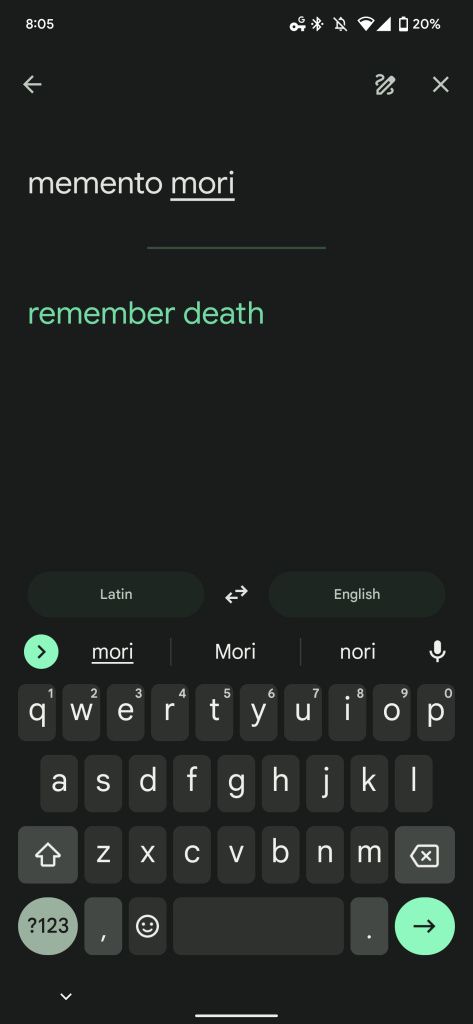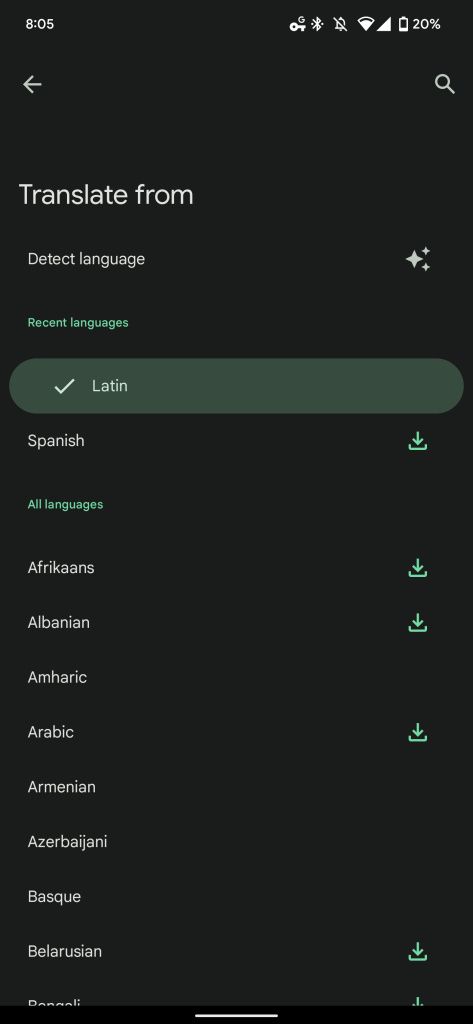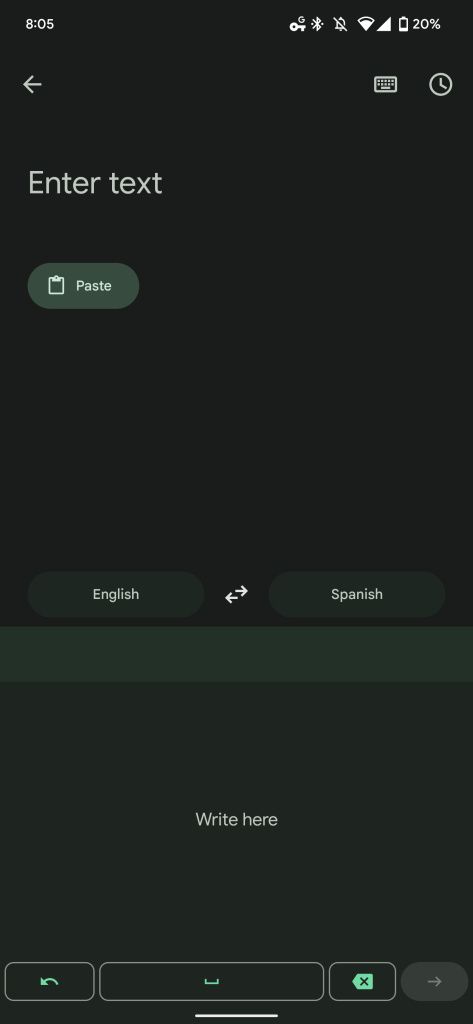Ever since Google announced the arrival of Android 12‘s stable release and dropped the source code to AOSP, the tinkering party is underway here at XDA. But unless you own a current-generation device like the OnePlus 9/9 Pro or the Samsung Galaxy S21, there’s a very good chance that you will have to wait for a few months to have your OEM send across the latest dessert onto your phone.
But of course, this is XDA, home to the largest community collection of custom ROMs and many other aftermarket developments. While OEMs are restricted by several factors which limit their ability to provide a timely update, our community members can do a fantastic job at giving other enthusiasts a chance to try out the latest Android release on their phones, right now! Granted, the early works from developers working with inadequate (and often non-existent) official resources can’t possibly give us bug-free ROMs. But they do highlight how groups of like-minded individuals can achieve something great when they all put their minds to it.
With the large number of unofficial builds of Android 12-based custom ROMs popping up, we felt it would be a good idea to create an index of devices that have Android 12 ports available for them. Do note that these are unofficial builds and will very likely contain bugs. Please read the first few posts of each linked thread so you know the current status of the build before flashing it on your phone.
Note: In this article, we will only be providing a link to the first Android 12 custom ROM that we come across for a particular device. This does not serve as an endorsement of that particular build, nor are we suggesting that the work of others should be ignored. We are limiting what we link to in order to prevent this article from becoming too lengthy. Please visit the XDA forums for your device to see if there are other, possibly more complete, builds available.
List of devices with Android 12 Custom ROMs:
This is the current list of devices that have received an Android 12 custom ROM:
- ASUS
- ASUS ZenFone Max Pro M1
- Lenovo
- Lenovo Z6 Pro
- Motorola
- Moto G5S
- Moto G9 Plus
- Nokia
- Nokia 6.1
- Nokia 6.1 Plus
- Nokia 7 Plus
- Nokia 7.1
- Nokia 8
- Nokia 8.1
- OnePlus
- OnePlus 5 and OnePlus 5T
- OnePlus 8T and OnePlus 9R
- OnePlus Nord
- Realme
- Realme 6/6i [India]/6s
- Realme 6 Pro
- Realme C3
- Samsung
- Samsung Galaxy A10
- Samsung Galaxy A20 and A20e
- Samsung Galaxy A21s
- Samsung Galaxy A30
- Samsung Galaxy A40
- Samsung Galaxy Note 10, Galaxy Note 10+, and Galaxy Note 10+ 5G
- Samsung Galaxy S10e, Galaxy S10, and Galaxy S10+
- Samsung Galaxy Tab S6 Lite
- Sony
- Sony Xperia XZ Premium
- Xiaomi
- Mi 5
- Mi 10T Lite/Mi 10i/Redmi Note 9 Pro 5G
- Mi 11 Lite 4G
- Mi A1
- Mi Mix 3
- Mi Note 10 Lite
- POCO F1
- POCO F2 Pro/Redmi K30 Pro
- POCO F3/Mi 11X/Redmi K40
- POCO X2/Redmi K30
- POCO X3
- POCO X3 Pro
- Redmi 5 Plus/Redmi Note 5
- Redmi K20 Pro/Mi 9T Pro
- Redmi Note 7/7S
- Redmi Note 7 Pro
- Redmi Note 8 and Redmi Note 8T
- Redmi Note 9S/9 Pro India/10 Lite India, Redmi Note 9 Pro, Redmi Note 9 Pro Max, and POCO M2 Pro
- Redmi Note 10
- Redmi Note 10 Pro and Redmi Note 10 Pro Max
- Redmi S2/Y2
1. ASUS
1.1. ASUS ZenFone Max Pro M1
If you have the ASUS ZenFone Max Pro M1 and want to try out Android 12 on your phone, then go right ahead and check out the beta release of official ArrowOS 12.0 build linked below. Note that the ROM ships with a source-built 4.19 kernel.
ArrowOS 12.0 based on Android 12 for the ASUS ZenFone Max Pro M1
2. Lenovo
2.1. Lenovo Z6 Pro
The Qualcomm Snapdragon 855-powered Lenovo Z6 Pro can now run Android 12, thanks to an experimental build of Potato Open Sauce Project (POSP) custom ROM. To know more, take a look at the forum thread below.
POSP 5.0 based on Android 12 for the Lenovo Z6 Pro
3. Motorola
3.1. Moto G5S
If you have a Moto G5S and want to try out Android 12 on your phone, then go right ahead and check out the vanilla AOSP 12.0 ROM linked below.
AOSP 12.0 for the Moto G5S
3.2. Moto G9 Plus
An unofficial build of ArrowOS on top of Android 12 is also available for the Moto G9 Plus. This ROM has some issues with Bluetooth and TWRP, but if you can overlook those, you can have your first taste of the latest Android version.
ArrowOS 12.0 based on Android 12 for the Moto G9 Plus
4. Nokia
4.1. Nokia 6.1
An unofficial build of AospExtended 9.0 on top of Android 12 is now available for the Nokia 6.1. If you would like to try it out, head on over to the forum thread linked below.
AospExtended 9.0 based on Android 12 for the Nokia 6.1
4.2. Nokia 6.1 Plus
If you have a Nokia 6.1 Plus and want to try out Android 12 on your phone, then go right ahead and check out the unofficial AospExtended 9.0 custom ROM linked below.
AospExtended 9.0 based on Android 12 for the Nokia 6.1 Plus
4.3. Nokia 7 Plus
For those of you eagerly awaiting Android 12-based custom ROMs for your Nokia 7 Plus, we have some good news for you: an unofficial build of AospExtended is now available for this device. If you would like to try it out, head on over to the forum thread below.
AospExtended 9.0 based on Android 12 for the Nokia 7 Plus
4.4. Nokia 7.1
The Nokia 7.1 has received a port of Android 12 through an unofficial build of AospExtended custom ROM. The ROM appears to be in good shape, with all basic hardware features working.
AospExtended 9.0 based on Android 12 for the Nokia 7.1
4.5. Nokia 8
Launched back in 2017, the Snapdragon 835-powered Nokia 8 can now run Android 12, thanks to an unofficial build of ArrowOS 12.0 custom ROM.
ArrowOS 9.0 based on Android 12 for the Nokia 8
4.6. Nokia 8.1
Nokia 8.1 users can now taste Android 12, courtesy of an unofficial build of OctaviOS 3.0. This ROM requires the latest stock modem and bootloader, so make sure to download and flash the them beforehand.
OctaviOS 3.0 based on Android 12 for the Nokia 8.1
5. OnePlus
5.1. OnePlus 5 and OnePlus 5T
For those of you eagerly awaiting Android 12-based custom ROMs for your OnePlus 5, we have some good news for you: a vanilla AOSP 12 ROM is now available for this device. If you would like to try it out, head on over to the forum thread below.
AOSP 12.0 for the OnePlus 5
A unified beta build of Pixel Experience 12 is also available for the phone duo. The second SIM-Slot does not work for mobile data, though, and VoLTE may not work in this ROM.
Pixel Experience 12 based on Android 12 for the OnePlus 5/5T
5.2. OnePlus 8T and OnePlus 9R
Although the OnePlus 8T and the OnePlus 9R don’t share a common firmware, both of them can now run Android 12, thanks to an unofficial unified build of AospExtended 9.0.
AospExtended 9.0 based on Android 12 for the OnePlus 8T/9T
5.3. OnePlus Nord
OnePlus has yet to publish a Android 12 beta build for the mid-ranger OnePlus Nord, but an alpha release of Pixel Experience 12 ROM for this phone is already available on our forums.
Pixel Experience 12 based on Android 12 for the OnePlus Nord
6. Realme
6.1. Realme 6/6i [India]/6s
The Realme 6 gets a taste of Android 12 through the Palladium OS 2.0 custom ROM. The build is also compatible with the Realme 6s and the Indian edition of the Realme 6i. If you would like to try it out, head on over to the forum thread linked below.
Palladium OS 2.0 based on Android 12 for the Realme 6/6i [India]/6s
6.2. Realme 6 Pro
An unofficial build of ArrowOS 12.0 brings the vanilla Android 12 experience to the Realme 6 Pro. If you would like to try it out, head on over to the forum thread linked below.
ArrowOS 12.0 based on Android 12 for the Realme 6 Pro
6.3. Realme C3
Android 12 comes to the Realme C3 in the form of an unofficial build of Pixel Experience 12 custom ROM. Since this is an early unofficial build, do intimate yourself of the bugs before flashing.
Pixel Experience 12 based on Android 12 for the Realme C3
7. Samsung
| Sr. No. |
Device, Device Forums, Codename |
Android 12 Custom ROM |
Date Added |
| 1. |
Samsung Galaxy A10 (a10) |
OctaviOS 3.0 |
October 23, 2021 |
| 2. |
Samsung Galaxy A20 (a20) |
OctaviOS 3.0 |
October 23, 2021 |
| 3. |
Samsung Galaxy A21s (a21s) |
AOSP 12.0 |
October 23, 2021 |
| 4. |
Samsung Galaxy A30 (a30) |
OctaviOS 3.0 |
October 23, 2021 |
| 5. |
Samsung Galaxy A40 (a40) |
OctaviOS 3.0 |
October 23, 2021 |
| 6. |
Samsung Galaxy Note 10 (d1)
Samsung Galaxy Note 10+ (d2s)
Samsung Galaxy Note 10+ 5G (d2x) |
LineageOS 19.0 |
October 16, 2021 |
| 7. |
Samsung Galaxy S10e (beyond0lte)
Samsung Galaxy S10 (beyond1lte)
Samsung Galaxy S10+ (beyond2lte) |
LineageOS 19.0 |
October 14, 2021 |
| 8. |
Samsung Galaxy Tab S6 Lite (gta4xl) |
LineageOS 19.0 |
October 23, 2021 |
7.1. Samsung Galaxy A10
The Exynos 7884-powered Samsung Galaxy A10 has received an unofficial build of OctaviOS 3.0 custom ROM based on Android 12. If you would like to try it out, head on over to the forum thread linked below.
OctaviOS 3.0 based on Android 12 for the Samsung Galaxy A10
7.2. Samsung Galaxy A20/A20e
If you’re looking for a vanilla Android 12 ROM to replace the One UI firmware on your Galaxy A20, you can opt for the unofficial OctaviOS 3.0 build linked below. The ROM is also compatible with the Galaxy A20e.
OctaviOS 3.0 based on Android 12 for the Samsung Galaxy A20/A20e
7.3. Samsung Galaxy A21s
The Galaxy A21s can now have a taste of Android 12, thanks to an experimental AOSP 12.0 build. If you would like to try it out, head on over to the forum thread below.
AOSP 12.0 for the Samsung Galaxy A21s
7.4. Samsung Galaxy A30
Android 12 for the Galaxy A30 is available in the form of an unofficial OctaviOS 3.0 build. Check out the ROM thread below and read the instructions carefully before flashing.
OctaviOS 3.0 based on Android 12 for the Samsung Galaxy A30
7.5. Samsung Galaxy A40
An unofficial build of OctaviOS 3.0 custom ROM has brought Android 12 to the Galaxy A40. If you would like to try it out, head on over to the forum thread linked below.
OctaviOS 3.0 based on Android 12 for the Samsung Galaxy A40
7.6. Samsung Galaxy Note 10, Note 10+, and Note 10+ 5G
Samsung has yet to start the One UI 4.0 beta testing for the Galaxy Note 10 series, but you can already try out Android 12 through an unofficial LineageOS 19.0 release for the Exynos variants of these devices.
LineageOS 19.0 based on Android 12 for the Samsung Galaxy Note 10/Note 10+/Note 10+ 5G
7.7. Samsung Galaxy S10e, S10, and S10+
For those of you eagerly awaiting Android 12-based custom ROMs for your Galaxy S10, we have some good news for you: an unofficial build of LineageOS 19.0 is now available for the Exynos variants. If you would like to try it out, head on over to the forum thread below.
LineageOS 19.0 based on Android 12 for the Samsung Galaxy S10e/S10/S10+
7.8. Samsung Galaxy Tab S6 Lite
Both the Wi-Fi only and LTE variants of the Samsung Galaxy Tab S6 Lite can now run Android 12, thanks to an unofficial build of LineageOS 19.0. Keep in mind that you need to be on a stock One UI 3.x/Android 11 firmware before flashing this ROM.
LineageOS 19.0 based on Android 12 for the Samsung Galaxy Tab S6 Lite
8. Sony
8.1. Sony Xperia XZ Premium
Your age-old Xperia XZ Premium can now run Android 12, courtesy of a vanilla AOSP 12 ROM compiled on top of Sony-provided binaries. If you would like to try it out, head on over to the forum thread below.
AOSP 12.0 for the Sony Xperia XZ Premium
9. Xiaomi
| Sr. No. |
Device, Device Forums, Codename |
Android 12 Custom ROM |
Date Added |
| 1. |
Mi 5 (gemini) |
AospExtended 9.0 |
October 23, 2021 |
| 2. |
Mi 10T Lite/Mi 10i/Redmi Note 9 Pro 5G (gauguin) |
Pixel Experience 12 |
October 29, 2021 |
| 3. |
Mi 11 Lite 4G (courbet) |
ArrowOS 12.0 |
October 16, 2021 |
| 4. |
Mi A1 (tissot_sprout) |
AOSP 12.0 |
October 16, 2021 |
| 5. |
Mi Mix 3 (perseus) |
xdroidsp 2.0 |
October 29, 2021 |
| 6. |
Mi Note 10 Lite (toco) |
Kang OS 3.0 |
October 23, 2021 |
| 7. |
POCO F1 (beryllium) |
AospExtended 9.0 |
October 16, 2021 |
| 8. |
POCO F2 Pro/Redmi K30 Pro (lmi) |
Pixel Experience 12 |
October 23, 2021 |
| 9. |
POCO F3/Mi 11X/Redmi K40 (alioth) |
Arrow OS 12.0 |
October 23, 2021 |
| 10. |
POCO X2/Redmi K30 (phoenix) |
POSP 5.0 |
October 16, 2021 |
| 11. |
POCO X3 (surya) |
AOSP 12.0 |
October 16, 2021 |
| 12. |
POCO X3 Pro (vayu) |
ArrowOS 12.0 |
October 16, 2021 |
| 13. |
Redmi 5 Plus/Redmi Note 5 (vince) |
ArrowOS 12.0 |
October 16, 2021 |
| 14. |
Redmi K20 Pro/Mi 9T Pro (raphael) |
AOSP 12.0 |
October 5, 2021 |
| 15. |
Redmi Note 7/7S (lavender) |
Weeb Project |
October 23, 2021 |
| 16. |
Redmi Note 7 Pro (violet) |
Project Elixir 1.0 |
October 29, 2021 |
| 17. |
Redmi Note 8 (ginkgo)
Redmi Note 8T (willow) |
AOSP 12.0 |
October 8, 2021 |
| 18. |
Redmi Note 9S/9 Pro India/10 Lite India (curtana)
Redmi Note 9 Pro (joyeuse)
Redmi Note 9 Pro Max (excalibur)
POCO M2 Pro (gram) |
Project Elixir 1.0 |
October 29, 2021 |
| 19. |
Redmi Note 10 (mojito/sunny) |
Fluid 2.0 |
October 16, 2021 |
| 20. |
Redmi Note 10 Pro (sweet/sweetin)
Redmi Note 10 Pro Max (sweetin) |
AOSP 12.0 |
October 8, 2021 |
| 21. |
Redmi S2/Y2 (ysl) |
AOSP 12.0 |
October 16, 2021 |
9.1. Mi 5
Launched back in 2016, the Snapdragon 820-powered Mi 5 can now run Android 12, thanks an unofficial build of AospExtended 9.0 custom ROM.
AospExtended 9.0 based on Android 12 for the Mi 5
9.2. Mi 10T Lite/Mi 10i/Redmi Note 9 Pro 5G
Those of you having a Mi 10T Lite (sold as the Mi 10i in India and the Redmi Note 9 Pro 5G in China) and want to try out vanilla Android 12 on your phone, then go right ahead and check out the Pixel Experience 12 build linked below.
Pixel Experience 12 based on Android 12 for the Mi 10T Lite/Mi 10i/Redmi Note 9 Pro 5G
9.3. Mi 11 Lite 4G
If you’re looking for an AOSP 12-based ROM instead of the MIUI skin on your Mi 11 Lite 4G, you can opt for the ArrowOS 12.0 beta build. The ROM appears to be stable, albeit SELinux is in permissive mode.
ArrowOS 12.0 based on Android 12 for the Mi 11 Lite 4G
9.4 Mi A1
Xiaomi didn’t update its first Android One device officially beyond Android Pie, but that doesn’t mean you can’t run the latest version of Android on this phone. In fact, a vanilla AOSP 12 ROM for the Mi A1 has already popped up in our forums. Check it out below.
AOSP 12.0 for the Mi A1
9.5 Mi Mix 3
The Mi Mix 3 gets a taste of Android 12 through the xdroidsp 2.0 custom ROM. This ROM has some issues with the second SIM and SELinux policies, but if you can overlook those, you can have your first taste of the latest Android version.
xdroidsp 2.0 based on Android 12 for the Mi Mix 3
9.6 Mi Note 10 Lite
If you have a Mi Note 10 Lite and want to try out Android 12 on your phone, then go right ahead and check out the official build of Kang OS 3.0 custom ROM linked below.
Kang OS 3.0 based on Android 12 for the Mi Note 10 Lite
9.7. POCO F1
If you’re looking for an Android 12-based custom ROM for your POCO F1, you can try out the community build of AospExtended 9.0 ROM. There are some bugs, though, so ensure that you intimate yourself of the same before proceeding.
AospExtended 9.0 based on Android 12 for the POCO F1
9.8. POCO F2 Pro/Redmi K30 Pro
Those of you having a POCO F2 Pro (sold as the Redmi K30 Pro in China) and want to try out vanilla Android 12 on your phone, then go right ahead and check out the alpha build of Pixel Experience custom ROM linked below.
Pixel Experience 12 based on Android 12 for the POCO F2 Pro/Redmi K30 Pro
9.9. POCO F3/Mi 11X/Redmi K40
Apart from the official public beta version of Android 12 from Xiaomi, POCO F3/Mi 11X/Redmi K40 users can also try out the early build of Arrow OS 12.0 custom ROM to get a taste of the latest iteration of Android on their phone.
Arrow OS 12.0 based on Android 12 for the POCO F3/Mi 11X/Redmi K40
9.10. POCO X2/Redmi K30
The POCO X2 (the global edition of the Redmi K30) has received a taste of Android 12 courtesy of an unofficial POSP 5.0 build. The ROM offers a nearly stock Android experience, but it still has a couple of bugs that need to be ironed out.
ArrowOS 12.0 based on Android 12 for the POCO X2/Redmi K30
9.11. POCO X3
The POCO X3 and the POCO X3 NFC share a common firmware — a design that helped these devices to get a unified AOSP 12 custom ROM. If you would like to try it out, head on over to the forum thread linked below.
AOSP 12.0 for the POCO X3
9.12. POCO X3 Pro
If you’re looking for an AOSP 12-based ROM instead of the MIUI skin on your POCO X3 Pro, you can opt for the early release build of ArrowOS 12.0.
ArrowOS 12.0 based on Android 12 for the POCO X3 Pro
9.13. Redmi 5 Plus/Redmi Note 5
It’s great to see that development for the Redmi 5 Plus (sold as the Redmi Note 5 in India) is still going strong, as an unofficial build of ArrowOS 12.0 based on Android 12 is now available for this phone. If you would like to try it out, head on over to the forum thread linked below.
ArrowOS 12.0 based on Android 12 for the Redmi 5 Plus/Redmi Note 5
9.14. Redmi K20 Pro/Mi 9T Pro
The Qualcomm Snapdragon 855-powered Redmi K20 Pro (sold as the Mi 9T Pro in certain regions) is the first phone to receive an Android 12 custom ROM. Grab the latest build of the ROM from the thread below and give it a shot.
AOSP 12.0 for the Redmi K20 Pro/Mi 9T Pro
9.15. Redmi Note 7/7S
The Redmi Note 7 and the Redmi Note 7S share a common firmware, which is why both of these devices have now received a unified Android 12 custom ROM in the form of Weeb Project. If you would like to try it out, head on over to the forum thread linked below.
Weeb Project based on Android 12 for the Redmi Note 7/7S
9.16. Redmi Note 7 Pro
The “Pro” variant of the Redmi Note 7 gets a taste of Android 12, thanks to an official build of the Project Elixir 1.0 custom ROM. Check it out below.
Project Elixir 1.0 based on Android 12 for the Redmi Note 7 Pro
9.17. Redmi Note 8 and Redmi Note 8T
The Redmi Note 8 and the Note 8T have received a unified Android 12-based AOSP ROM. If you are ready to ignore some minor glitches, the ROM appears to be in pretty good shape for something that is being based on a brand new OS version that was launched this week.
AOSP 12.0 for the Redmi Note 8/8T
9.18. Redmi Note 9S/9 Pro India/10 Lite India, Redmi Note 9 Pro, Redmi Note 9 Pro Max, and POCO M2 Pro
Xiaomi has a bunch of Qualcomm Snapdragon 720G-powered devices in its portfolio with a very similar hardware configuration. All those devices – collectively known as “miatoll” – have received a unified build of Project Elixir 1.0 on top of Android 12.
Project Elixir 1.0 based on Android 12 for the Redmi Note 9S/9 Pro India/10 Lite India, Redmi Note 9 Pro, Redmi Note 9 Pro Max, and POCO M2 Pro
9.19. Redmi Note 10
If you have a Redmi Note 10 and want to try out Android 12 on your phone, then go right ahead and check out the unofficial build of Fluid 2.0 custom ROM linked below.
Fluid 2.0 based on Android 12 for the Redmi Note 10
9.20. Redmi Note 10 Pro and Redmi Note 10 Pro Max
An unofficial build of AOSP 12.0 brings vanilla Android 12 experience to the Redmi Note 10 Pro. The ROM is also compatible with the Redmi Note 10 Pro Max. If you would like to try it out, head on over to the forum thread linked below.
AOSP 12.0 for the Redmi Note 10 Pro/Pro Max
9.21. Redmi S2/Y2
If you still have a Redmi Y2 (sold as the Redmi S2 in China) lying around, you can now flash this vanilla AOSP ROM to get a taste of Android 12. There are a few bugs that you would need to deal with, though. For instance, the Goodix fingerprint sensor is buggy, and SELinux is set as permissive.
AOSP 12.0 for the Redmi S2/Y2
Android 12 Google Apps
Apart from the ROMs mentioned above, we are going to be seeing a lot of custom builds of Android 12 released in the coming weeks. However, not all custom ROMs ship with pre-installed Google apps. In case you’re looking for a suitable GApps distribution, then you’ll be happy to know that the maintainers have already laid the groundwork to support the latest version of Android.
1. BiTGApps
XDA Senior Member TheHitMan has recently released an alpha version of the BiTGApps package. The new branch, tagged as 3.0, focuses specifically on Android 12.
Download BiTGApps
2. NikGapps
The maintainer of the NikGapps project, XDA Senior Member Nikhil, has also started releasing Android 12-comaptible GApps packages.
Download NikGapps
Have you spotted a custom ROM on our forums for a device we haven’t covered yet? Let us know in the comments below!
The post Android 12 Custom ROM List: Unofficially update your Android smartphone! appeared first on xda-developers.
from xda-developers https://ift.tt/3lnu35J
via
IFTTT







